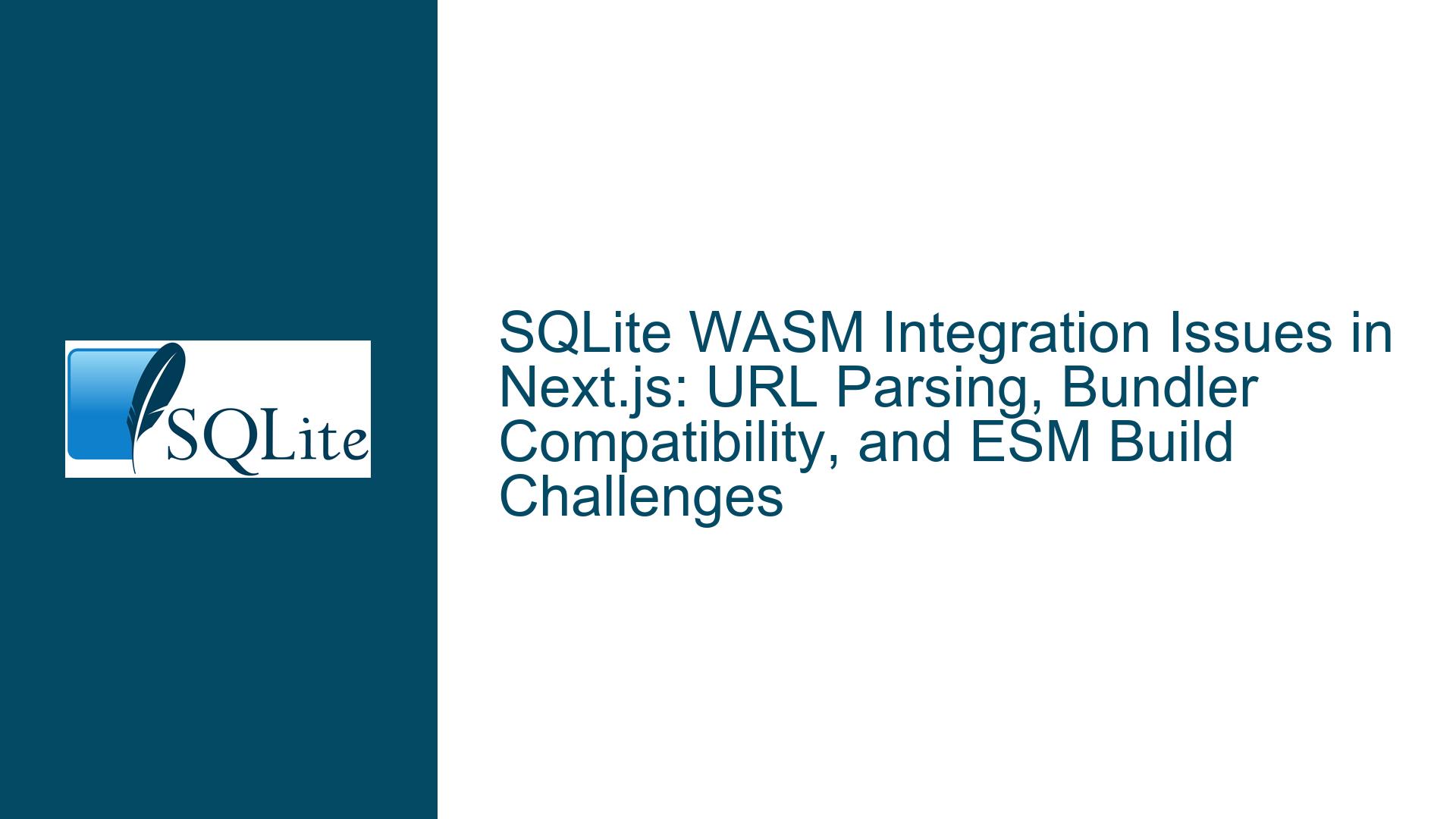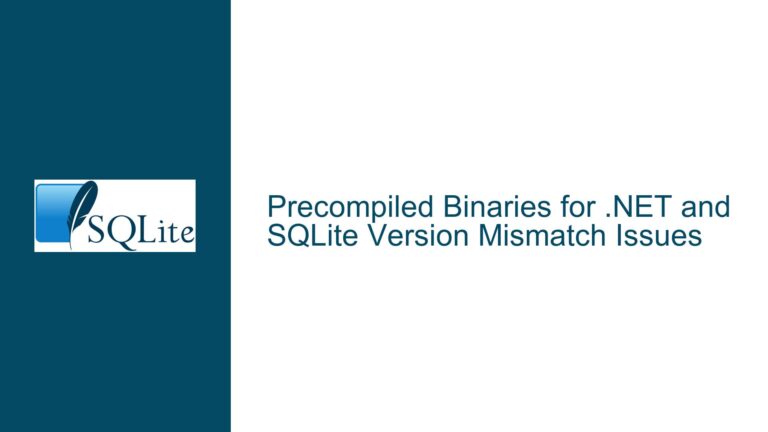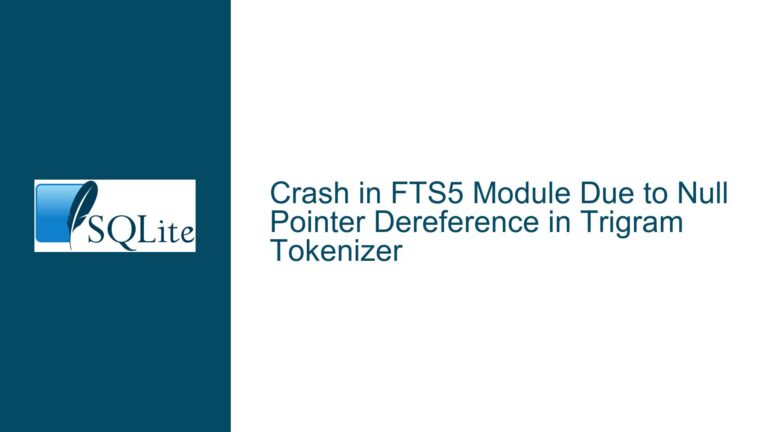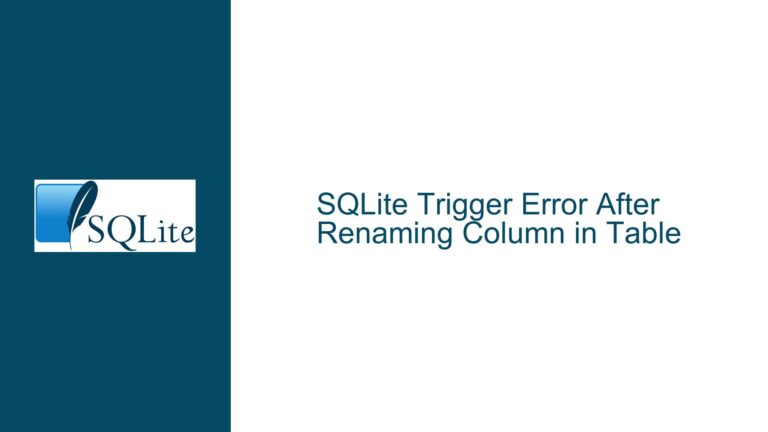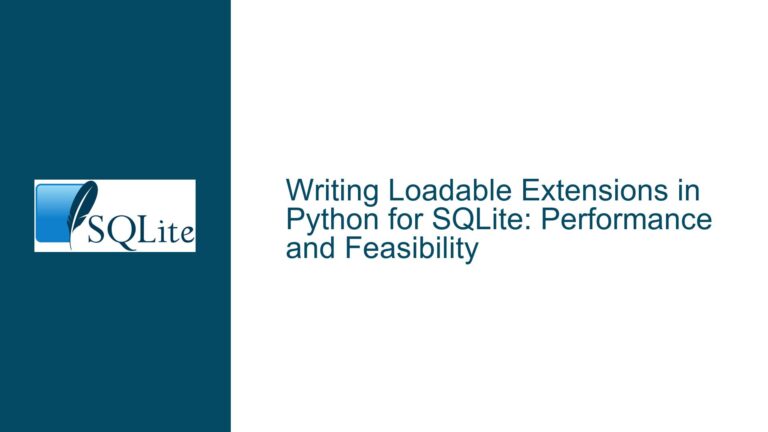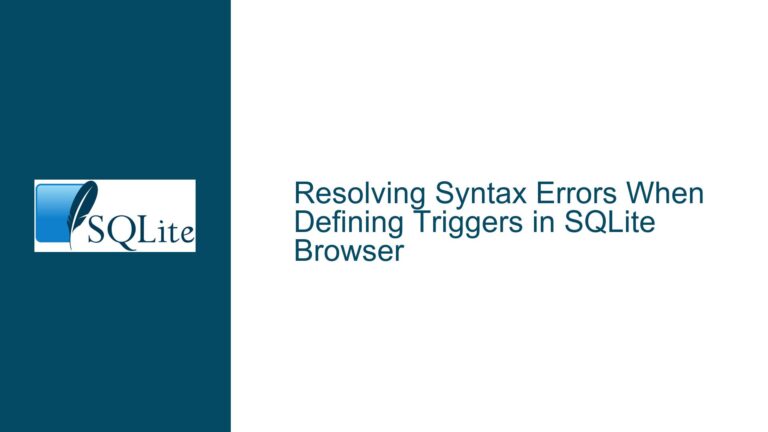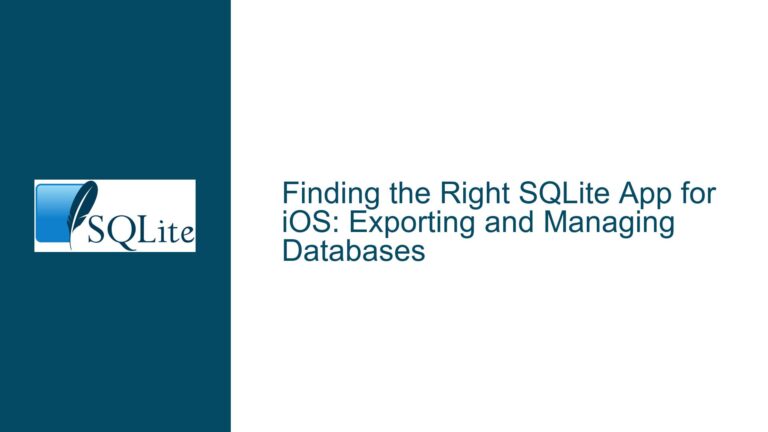SQLite WASM Integration Issues in Next.js: URL Parsing, Bundler Compatibility, and ESM Build Challenges
Issue Overview: URL Parsing and Bundler Compatibility in SQLite WASM with Next.js
The core issue revolves around integrating SQLite WASM into a Next.js application, specifically focusing on the challenges related to URL parsing, bundler compatibility, and the use of ES Modules (ESM). The primary problem stems from how Next.js and modern JavaScript bundlers handle dynamic URLs and static analysis requirements, which conflict with the way SQLite WASM is currently designed to operate.
When attempting to load SQLite WASM in a Next.js environment, the URL query parameters are mangled by the framework, leading to incorrect file paths. This issue is exacerbated by the fact that SQLite WASM relies on dynamic URL construction for loading resources like WebAssembly (WASM) files and worker scripts. However, modern bundlers and frameworks like Next.js require static string literals for URLs to perform static analysis, which is necessary for optimizing and bundling the application.
Additionally, the SQLite WASM build process, which uses Emscripten, introduces certain artifacts and workarounds that are not compatible with modern JavaScript tooling. These include duplicate export statements and dynamic module loading, which are problematic when used with bundlers like Webpack or frameworks like Next.js. The result is a series of errors, such as exports is not defined and Not allowed to load local resource, which prevent the SQLite WASM from functioning correctly in a Next.js environment.
Possible Causes: Dynamic URL Construction, Emscripten Artifacts, and Bundler Requirements
The root causes of these issues can be traced back to three main areas: dynamic URL construction, Emscripten-generated artifacts, and the requirements of modern JavaScript bundlers.
Dynamic URL Construction: SQLite WASM uses dynamic URLs to load resources such as WASM files and worker scripts. For example, the code new URL("sqlite3.wasm", import.meta.url) dynamically constructs the URL for the WASM file based on the current module’s URL. While this approach is flexible and works well in environments where dynamic URLs are supported, it clashes with the static analysis requirements of modern bundlers. Bundlers like Webpack and frameworks like Next.js need to know the exact paths of resources at build time to optimize and bundle the application effectively. When dynamic URLs are used, the bundler cannot determine the correct paths, leading to errors such as Not allowed to load local resource.
Emscripten Artifacts: The SQLite WASM build process relies on Emscripten, which introduces certain artifacts and workarounds that are not compatible with modern JavaScript tooling. For example, Emscripten generates duplicate export statements and dynamic module loading code, which can cause errors like exports is not defined when used with bundlers. These issues are particularly problematic in environments like Next.js, where the bundler expects clean, statically analyzable code.
Bundler Requirements: Modern JavaScript bundlers have specific requirements for how code should be structured to enable static analysis and optimization. One of these requirements is the use of static string literals for URLs. When dynamic URLs are used, the bundler cannot determine the correct paths at build time, leading to errors. Additionally, bundlers expect modules to be statically importable, which conflicts with the dynamic module loading approach used by SQLite WASM.
Troubleshooting Steps, Solutions & Fixes: Static URL Literals, ESM Build Adjustments, and Bundler-Friendly Configurations
To resolve these issues, several steps can be taken to make SQLite WASM compatible with Next.js and modern JavaScript bundlers. These steps involve modifying the SQLite WASM build process to use static URL literals, adjusting the ESM build to remove incompatible artifacts, and creating bundler-friendly configurations.
1. Use Static URL Literals: The first and most critical step is to replace dynamic URL construction with static string literals. This change ensures that the bundler can correctly resolve the paths to resources like WASM files and worker scripts at build time. For example, instead of using new URL("sqlite3.wasm", import.meta.url), the code should use a static string literal like new URL("./sqlite3.wasm", import.meta.url). This approach allows the bundler to correctly resolve the path to the WASM file and include it in the build.
2. Adjust the ESM Build: The ESM build of SQLite WASM should be adjusted to remove any Emscripten-generated artifacts that are incompatible with modern JavaScript tooling. This includes removing duplicate export statements and dynamic module loading code. For example, the following code, which is injected by Emscripten, should be removed or modified:
if (typeof exports === "object" && typeof module === "object") {
module.exports = sqlite3InitModule;
} else if (typeof exports === "object") {
exports["sqlite3InitModule"] = sqlite3InitModule;
}
This code is unnecessary in an ESM environment and can cause errors when used with bundlers. By removing or modifying this code, the ESM build becomes more compatible with modern JavaScript tooling.
3. Create Bundler-Friendly Configurations: To further improve compatibility with bundlers, a separate bundler-friendly build of SQLite WASM can be created. This build should use static string literals for all URLs and avoid any dynamic module loading. For example, the following code, which dynamically constructs the URL for a worker script, should be replaced with a static string literal:
const W = new Worker(new URL("sqlite3-opfs-async-proxy.js", import.meta.url));
Instead, the code should use a static string literal like this:
const W = new Worker(new URL("./sqlite3-opfs-async-proxy.js", import.meta.url));
This change ensures that the bundler can correctly resolve the path to the worker script and include it in the build.
4. Update Documentation and Build Process: Finally, the documentation and build process for SQLite WASM should be updated to reflect these changes. This includes providing clear instructions for building a bundler-friendly version of SQLite WASM and updating the documentation to include examples of how to use SQLite WASM with modern JavaScript frameworks like Next.js. Additionally, the build process should be simplified to make it easier for developers to create custom builds that are compatible with their specific tooling.
By following these steps, SQLite WASM can be made compatible with Next.js and modern JavaScript bundlers, allowing developers to take full advantage of its capabilities in a wide range of environments.
